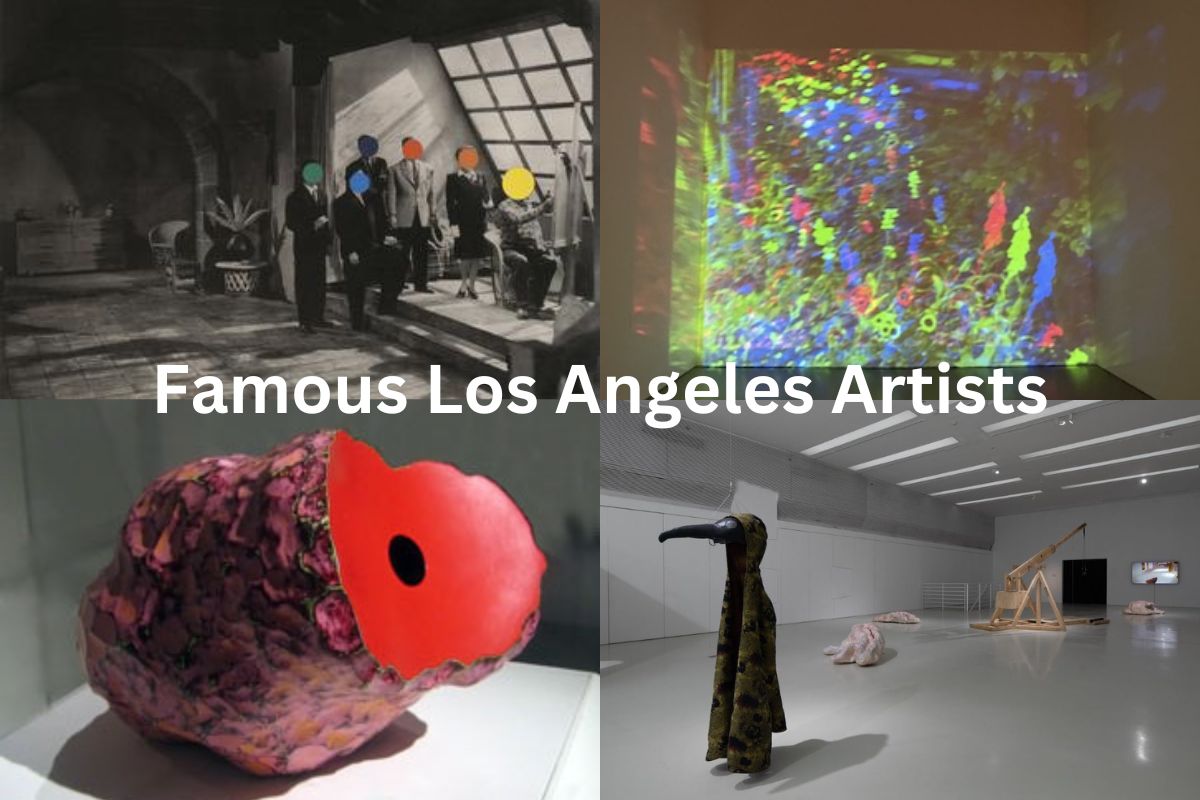Los Angeles has been a major center for contemporary art since the 1960s. The city’s vibrant cultural scene has attracted artists from around the world, who have been drawn to its sunny climate, diverse communities, and experimental spirit.
Over the years, Los Angeles has produced many famous artists who have had a significant impact on the art world, from the pioneers of the Light and Space movement to the feminist artists of the 1970s and the contemporary artists working today.
Their work spans a wide range of media, including painting, sculpture, photography, performance, and installation, and reflects the city’s complex history and culture.
In this article, we will explore some of the most famous Los Angeles artists, their backgrounds, and their contributions to the art world.
Famous Los Angeles Artists
1. John Baldessari
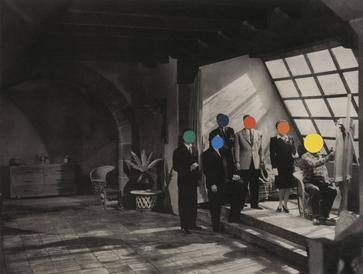
John Baldessari was a conceptual artist who was born in National City, California in 1931 and passed away in 2020. He is considered one of the most influential artists of his generation and a key figure in the development of conceptual art in the 1960s and 1970s.
Baldessari’s work often involved the combination of text and image to create humorous and thought-provoking juxtapositions. He was known for his use of appropriated images from popular culture, such as movie stills, and his manipulation of them to create new meanings.
In the 1970s, Baldessari turned to photography and video as his primary media, exploring the relationship between image and language in a series of works that combined still images with voice-overs and text.
Baldessari was also a highly respected teacher, and he taught at the California Institute of the Arts (CalArts) in Valencia, California for many years, influencing a generation of young artists.
Some of his most well-known works include “I Will Not Make Any More Boring Art” (1971), a series of lithographs in which the phrase is repeated over and over again, and “The Goya Series” (1997-98), a series of prints that juxtapose Goya’s famous series of etchings “Los Caprichos” with Baldessari’s own images and text.
Baldessari received numerous awards and honors during his career, including the Golden Lion for Lifetime Achievement at the 53rd Venice Biennale in 2009. He passed away in 2020 at the age of 88.
2. Paul McCarthy
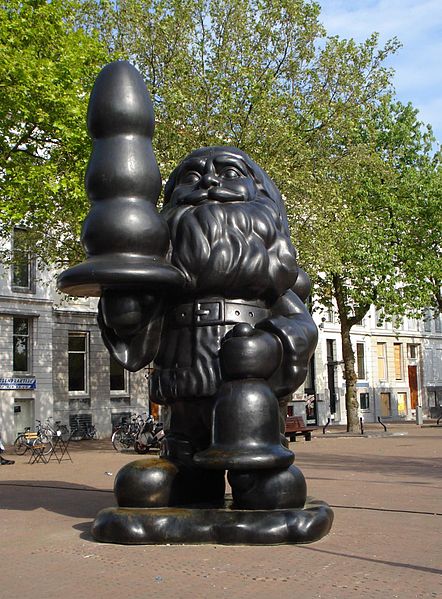
Paul McCarthy is an American contemporary artist who was born in Salt Lake City, Utah, in 1945. He is known for his provocative and controversial works that often explore themes of violence, sexuality, and consumerism.
McCarthy’s early work was influenced by pop art and performance art, and he became known for his performances in which he would engage in absurd and grotesque acts.
In the 1980s, he began creating sculptures and installations that continued to explore these themes, often using materials such as chocolate, ketchup, and bodily fluids.
One of McCarthy’s most famous works is “Santa Claus” (2001), a 80-foot inflatable sculpture of Santa Claus holding a Christmas tree that was installed in Rotterdam, the Netherlands. The sculpture was controversial due to its sexualized imagery and was vandalized several times.
Another notable work is “Bossy Burger” (1991), a video installation that satirizes the fast food industry and its advertising tactics. The installation features a large sculpture of a hamburger, as well as video screens showing commercials for the fictional Bossy Burger chain.
McCarthy has exhibited his work internationally, and his works are held in the collections of major museums and galleries around the world. He has also been the subject of numerous retrospectives, including exhibitions at the Whitney Museum of American Art in New York and the Tate Modern in London.
3. Mike Kelley
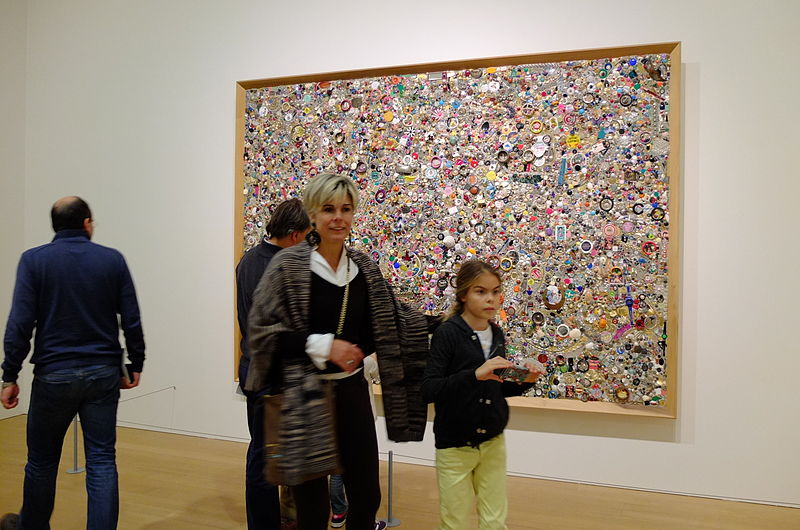
Mike Kelley was an American artist who was born in Wayne, Michigan, in 1954 and passed away in 2012. He was known for his interdisciplinary approach to art, combining sculpture, installation, video, and performance to explore themes of memory, trauma, and popular culture.
Kelley’s work often featured found objects, such as stuffed animals, dolls, and blankets, which he would manipulate and rearrange to create new narratives. He was also known for his use of unconventional materials, such as garbage bags and old blankets, to create his sculptures and installations.
One of his most famous works is “More Love Hours than Can Ever Be Repaid” (1987), a large installation that features dozens of rag dolls arranged in a circle, surrounded by blankets and other objects. The installation explores themes of childhood trauma and abuse.
Another notable work is “Day Is Done” (2005), a multimedia project that includes video, sound, and performance. The project is a tribute to the Hollywood musicals of the 1930s and 1940s and features reenactments of musical numbers and other scenes.
Kelley was a highly influential artist, and his work has been exhibited at major museums and galleries around the world. He was the recipient of numerous awards and honors, including the Skowhegan Medal for Mixed Media in 2006 and the Oskar Kokoschka Prize in 2010.
4. Edward Ruscha

Edward Ruscha is an American artist who was born in Omaha, Nebraska in 1937. He is known for his use of text and images to explore themes of the American West, popular culture, and consumerism.
Ruscha’s work often features words and phrases painted in bold block letters against a background of bright colors or images. He is particularly known for his use of the word “Hollywood,” which he has used in many of his works to comment on the myth and reality of the film industry.
One of his most famous works is “Standard Station” (1966), a painting of a gas station that features the word “Standard” painted in large letters across the top. The painting is part of a series of works that Ruscha created in the 1960s that feature gas stations and other roadside architecture.
Another notable work is “Every Building on the Sunset Strip” (1966), a book that features a series of photographs of every building on the famous Sunset Strip in Los Angeles. The book is an early example of Ruscha’s use of photography in his art.
Ruscha’s work has been exhibited at major museums and galleries around the world, and he has received numerous awards and honors, including the National Medal of Arts in 2019. He continues to work and live in Los Angeles.
5. Math Bass
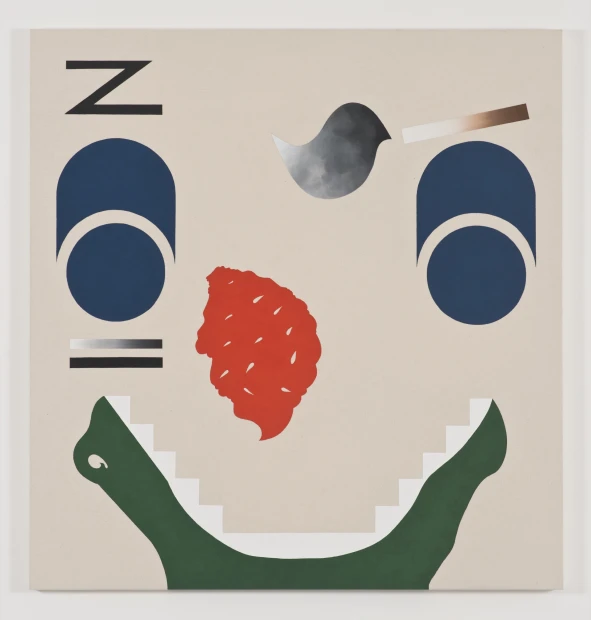
Math Bass is an American artist who was born in New York City in 1981. She is known for her abstract paintings, sculptures, and installations that explore themes of language, gender, and identity.
Bass’s work often features geometric shapes, symbols, and patterns that are arranged in bold, colorful compositions. She is particularly known for her use of ambiguous forms that can be interpreted in multiple ways, inviting the viewer to engage with the work on multiple levels.
One of her most famous works is the “Newz!” series (2012-2013), a collection of paintings and sculptures that feature abstract forms and symbols arranged in a way that suggests the headlines of a newspaper.
The series is a commentary on the media’s influence on public perception and the ways in which language shapes our understanding of the world.
Another notable work is “Lies Inside” (2014), an installation that features a series of sculptural forms arranged in a way that suggests the interior of a body.
The work is a meditation on the relationship between the body and language, and the ways in which language can shape our experience of the world.
Bass’s work has been exhibited at major museums and galleries around the world, and she has received numerous awards and honors, including a Guggenheim Fellowship in 2015. She continues to work and live in Los Angeles.
6. Ken Price
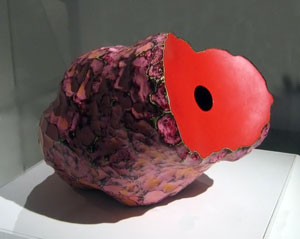
Ken Price was an American artist who was born in Los Angeles, California in 1935 and passed away in 2012. He is known for his ceramic sculptures that explore the relationship between form, color, and texture.
Price’s work often features abstract shapes and organic forms that are suggestive of the human body or natural landscapes. He was particularly known for his use of glazes and surface treatments, which gave his sculptures a rich, tactile quality.
One of his most famous series of works is the “Happy’s Curios” series (1994-2002), a collection of sculptures that are inspired by the kitschy roadside attractions and souvenir shops of the American Southwest. The sculptures are brightly colored and highly detailed, featuring intricate patterns and textures that suggest the surfaces of natural objects.
Another notable series of works is the “Eggs” series (1970s-1990s), a collection of small-scale ceramic sculptures that resemble eggs. The sculptures are highly polished and feature a range of colors and textures, from smooth, glossy surfaces to rough, textured exteriors.
Price’s work has been exhibited at major museums and galleries around the world, and he has received numerous awards and honors, including the Golden Lion for Lifetime Achievement at the 2003 Venice Biennale. He continues to be regarded as one of the most important ceramic artists of the 20th century.
7. Diana Thater
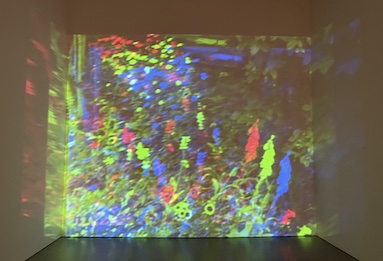
Diana Thater is an American artist who was born in San Francisco, California in 1962. She is known for her immersive installations that combine video, sculpture, and architecture to explore themes of nature, technology, and perception.
Thater’s work often features large-scale projections of video footage that is manipulated and distorted to create abstract, otherworldly landscapes. She is particularly known for her use of color and light, which she uses to create immersive environments that transport the viewer to another world.
One of her most famous works is “Delphine” (1999), a video installation that features footage of a group of dolphins swimming in an underwater tank. The footage is projected onto a series of screens that are arranged in a circular formation, creating a disorienting, dreamlike effect.
Another notable work is “Chernobyl” (2011), an installation that features footage of the abandoned city of Pripyat, Ukraine, which was evacuated after the Chernobyl disaster in 1986. The footage is projected onto a series of screens that are arranged in a way that suggests the layout of the city, creating a haunting and immersive experience.
Thater’s work has been exhibited at major museums and galleries around the world, and she has received numerous awards and honors, including a MacArthur Fellowship in 2013. She continues to work and live in Los Angeles.
8. Catherine Opie
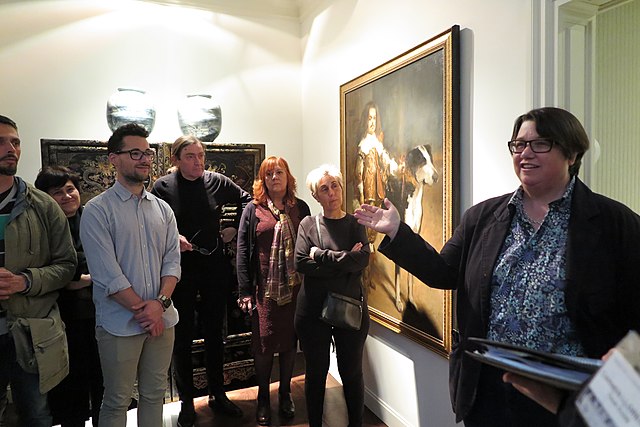
Catherine Opie is an American photographer who was born in Sandusky, Ohio in 1961. She is known for her large-scale portraits and landscapes that explore themes of identity, community, and social issues.
Opie’s work often features portraits of people from diverse communities, including members of the LGBT community, surfers, and high school football players. She is particularly known for her use of color and composition, which imbues her portraits with a sense of intimacy and humanity.
One of her most famous works is the “Domestic” series (1995-1998), a collection of photographs that feature interiors of homes and apartments in Los Angeles. The photographs are highly stylized, featuring brightly colored walls, furniture, and objects that create a sense of playfulness and whimsy.
Another notable series of works is the “Inauguration” series (2009), a collection of photographs that document the historic inauguration of President Barack Obama in Washington, D.C. The photographs capture the energy and excitement of the crowds, as well as the historic significance of the event.
Opie’s work has been exhibited at major museums and galleries around the world, and she has received numerous awards and honors, including a Guggenheim Fellowship in 1999 and the Smithsonian’s Archives of American Art Medal in 2016. She is also a professor of photography at the University of California, Los Angeles (UCLA).
9. Paul Sietsema
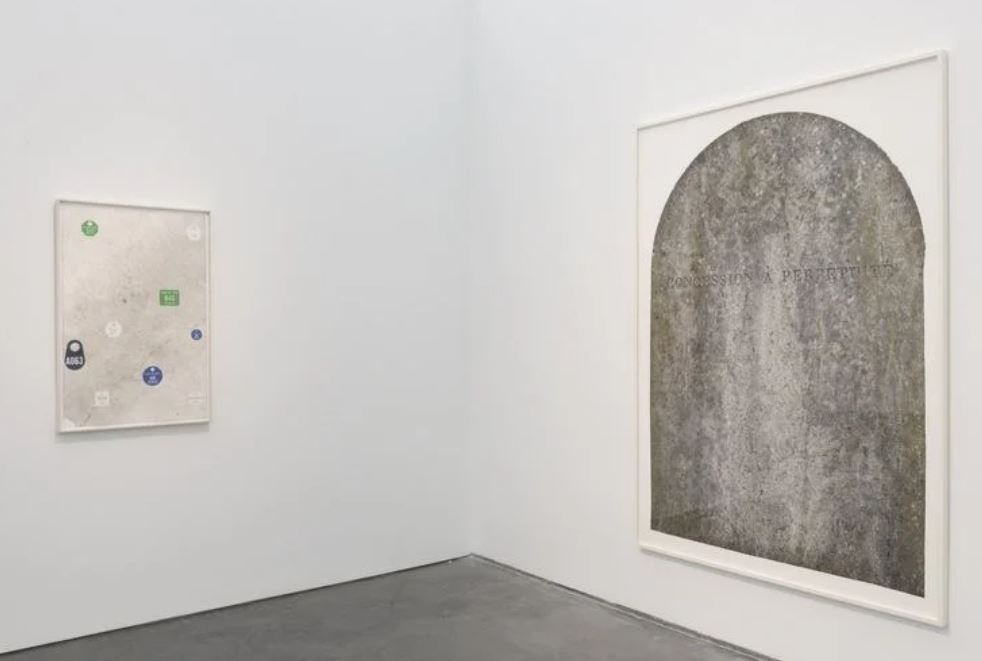
Paul Sietsema is an American artist who was born in Los Angeles, California in 1968. He is known for his drawings, paintings, and films that explore themes of history, memory, and materiality.
Sietsema’s work often features highly detailed, photorealistic images of everyday objects, such as stamps, coins, and maps. He is particularly known for his use of old and discarded materials, such as cardboard and parchment, which he uses to create layered, textured surfaces that suggest the passage of time.
One of his most famous works is “Figure 3” (2008), a film that features a series of black and white images of objects, such as a pencil, a key, and a coin, that are slowly rotated and examined from different angles. The film is accompanied by a soundtrack that includes music and the sound of the objects being handled, creating a mesmerizing and meditative experience.
Another notable work is “Drawing 4” (2004), a large-scale drawing that features an intricate pattern of lines and shapes that suggest architectural plans and mathematical diagrams. The drawing is highly detailed and precise, yet also highly abstract, inviting the viewer to engage with the work on multiple levels.
Sietsema’s work has been exhibited at major museums and galleries around the world, and he has received numerous awards and honors, including a Guggenheim Fellowship in 2009. He continues to work and live in Los Angeles.
10. Candice Lin
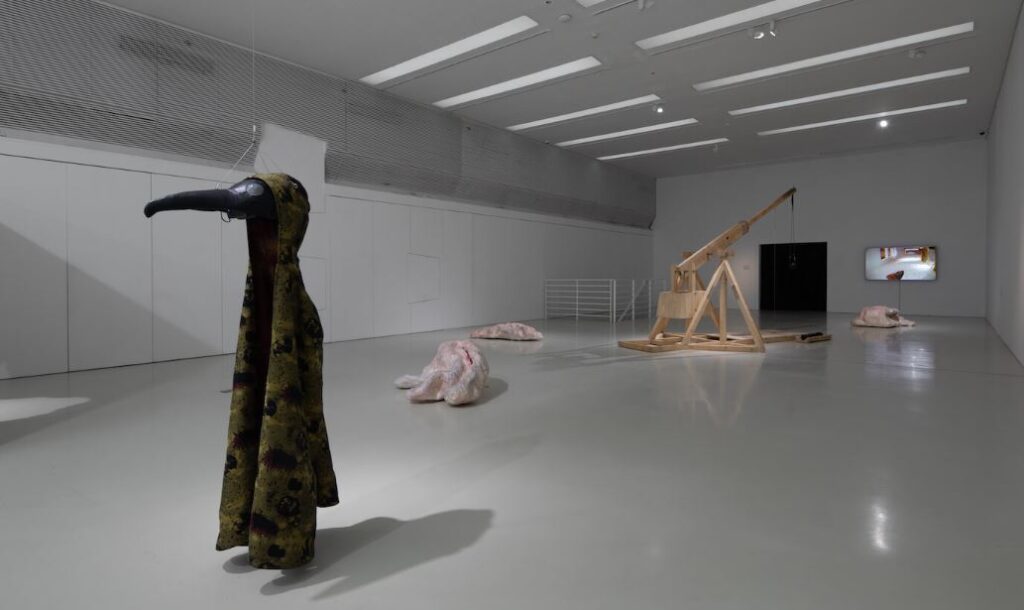
Candice Lin is an American artist who was born in Concord, Massachusetts in 1979. She is known for her multidisciplinary installations that explore themes of history, identity, and power.
Lin’s work often features a range of materials, including sculpture, video, and sound, to create immersive environments that engage the viewer’s senses. She is particularly interested in the ways in which objects and materials can carry historical and cultural meaning, and how these meanings can be subverted or transformed.
One of her most famous works is “A Hard White Body, a Soft White Worm” (2016), an installation that features a range of objects, including ceramic sculptures, video projections, and a live worm colony. The installation explores the legacy of colonialism and the ways in which bodies and objects are marked by power and history.
Another notable work is “Pigs and Poison” (2015), an installation that features a range of objects, including pig bones, antique glassware, and a range of chemical compounds. The installation explores the intersections of science and culture, and the ways in which knowledge is constructed and transmitted.
Lin’s work has been exhibited at major museums and galleries around the world, and she has received numerous awards and honors, including the Frieze Artist Award in 2018. She is also a professor of art at the University of Southern California (USC).

